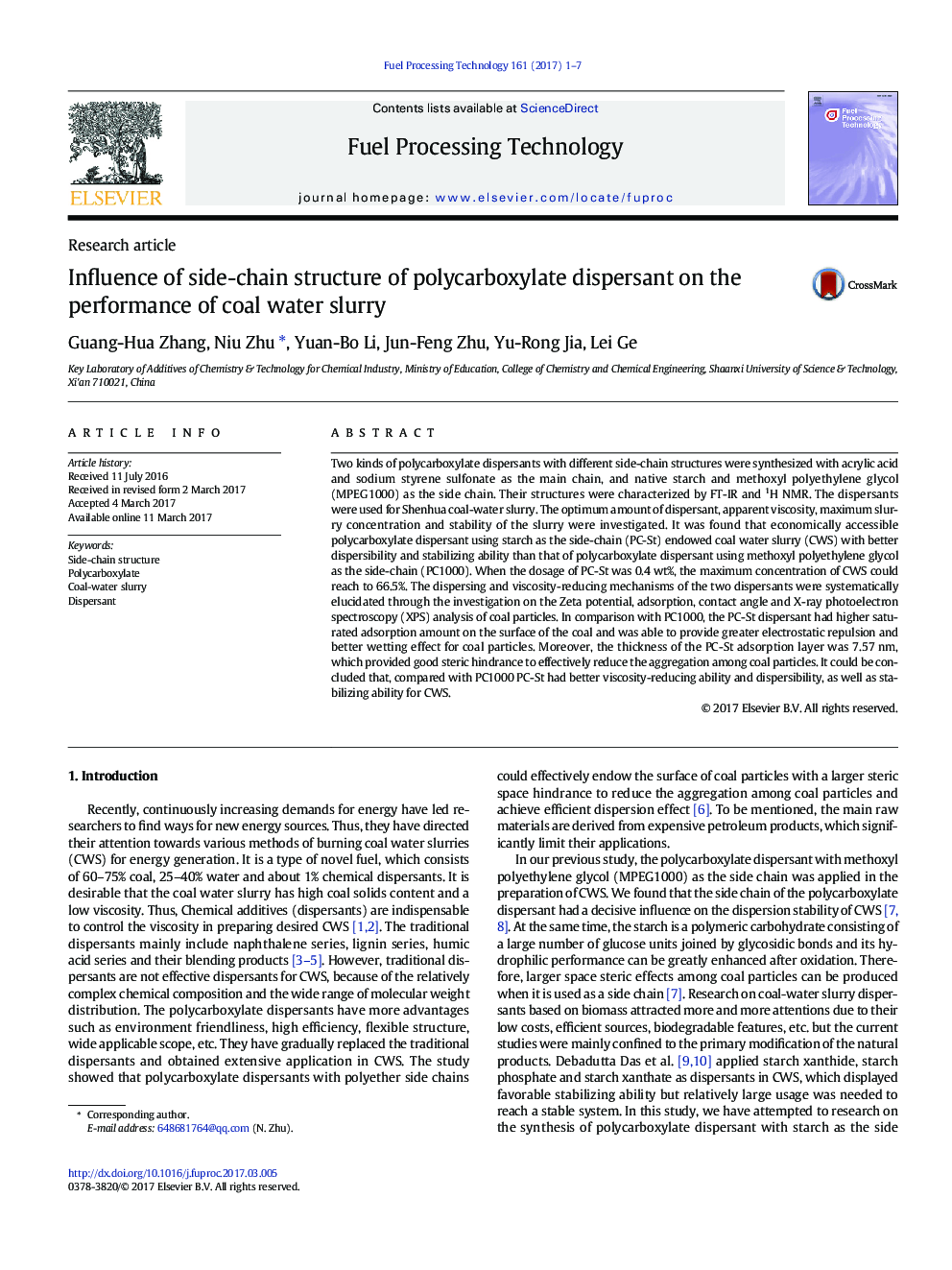| Article ID | Journal | Published Year | Pages | File Type |
|---|---|---|---|---|
| 6476463 | Fuel Processing Technology | 2017 | 7 Pages |
â¢PC-St had better dispersibility than traditional polycarboxylate dispersant in CWS.â¢Economic accessible starch could replace expensive polyether.â¢The maximum concentration of CWS could reach 66.5% with 0.4 wt% dosage of PC-St.â¢Dispersing and viscosity reducing mechanisms of the two dispersants were elucidated.â¢PC-St played a dual role in dispersion of coal particles.
Two kinds of polycarboxylate dispersants with different side-chain structures were synthesized with acrylic acid and sodium styrene sulfonate as the main chain, and native starch and methoxyl polyethylene glycol (MPEG1000) as the side chain. Their structures were characterized by FT-IR and 1H NMR. The dispersants were used for Shenhua coal-water slurry. The optimum amount of dispersant, apparent viscosity, maximum slurry concentration and stability of the slurry were investigated. It was found that economically accessible polycarboxylate dispersant using starch as the side-chain (PC-St) endowed coal water slurry (CWS) with better dispersibility and stabilizing ability than that of polycarboxylate dispersant using methoxyl polyethylene glycol as the side-chain (PC1000). When the dosage of PC-St was 0.4Â wt%, the maximum concentration of CWS could reach to 66.5%. The dispersing and viscosity-reducing mechanisms of the two dispersants were systematically elucidated through the investigation on the Zeta potential, adsorption, contact angle and X-ray photoelectron spectroscopy (XPS) analysis of coal particles. In comparison with PC1000, the PC-St dispersant had higher saturated adsorption amount on the surface of the coal and was able to provide greater electrostatic repulsion and better wetting effect for coal particles. Moreover, the thickness of the PC-St adsorption layer was 7.57Â nm, which provided good steric hindrance to effectively reduce the aggregation among coal particles. It could be concluded that, compared with PC1000 PC-St had better viscosity-reducing ability and dispersibility, as well as stabilizing ability for CWS.
